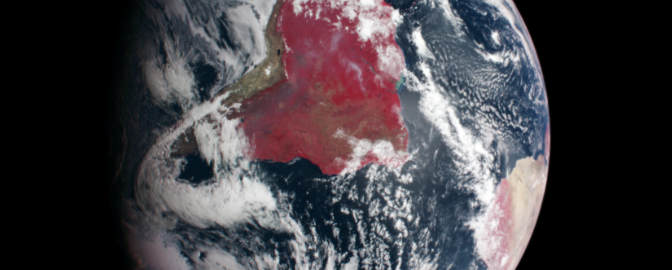InSight, NASA's Mars lander that studied the planet's interior
Highlights
- Mars and Earth both had conditions suitable for life for some periods of time 3 to 4 billion years ago, until Mars lost its atmosphere and became a cold, dry desert.
- NASA's InSight spacecraft studied Mars' interior and Marsquakes to learn how other worlds, including Earth-like exoplanets around other stars, evolve.
- InSight was operational on Mars from November 2018 until December 2022.
What was InSight?
Space exploration missions to Mars have taught us that for at least some periods of time 3 to 4 billion years ago, Mars had conditions that could have supported life as we know it. Then, Mars lost its magnetic field and the Sun stripped away its atmosphere.
Why did this happen on Mars but not Earth? To learn why our planet took such a different evolutionary path and what the possibilities are for other worlds including Earth-like exoplanets, we need to learn about Mars' interior.
NASA's InSight spacecraft, an acronym for Interior Exploration using Seismic
Investigations, Geodesy and Heat Transport, launched to Mars in May 2018 and landed later that year in November. Its mission was to learn more about how Mars' interior is layered so scientists could compare Mars with what we know about other planets and Earth.
One of InSight's primary science instruments, a heat-flow probe known as the mole, failed to work because the soil at the landing site was different than predicted. InSight had been operating in an extended mission until December 2022, listening for Marsquakes to help us learn more about what lies beneath the Martian surface.

How did InSight work?
InSight's design was based on NASA's Phoenix lander, with a robotic arm and dual solar arrays that powered the spacecraft's instruments. InSight measured about 6 meters (20 feet) wide including its solar panels and about a meter (3 feet) tall.
InSight had two main science experiments: a seismometer called SEIS to measure Marsquakes and a heat-flow probe called HP3 designed to burrow up to 5 meters beneath the surface to collect temperature readings. InSight used its robotic arm to place both on the surface shortly after arrival.
The largest Marsquake recorded by SEIS was a magnitude 4.7. The waves from Marsquakes are different than those seen on Earth and the Moon, indicating Mars' uppermost layers may be heavily fractured or that the quakes come from deep within the planet.
The soil at InSight's landing site was different than any seen before on Mars, and did not provide enough friction for the HP3 temperature probe known as the mole to burrow beneath the surface. After nearly two years of efforts with InSight's robotic arm to help the mole dig, NASA formally called off the effort in January 2020.

Mission complete
On Dec. 21, 2022 NASA officially declared InSight's mission over. The space agency had tried to make contact with the lander but said its solar-powered batteries appeared to have run out of energy.
It's been estimated that NASA spent about $814 million on InSight over the project's lifetime. The Planetary Society has additional context to help you understand this number.
Academic resources
Banerdt, W. B., Smrekar, S. E., Banfield, D., Giardini, D., Golombek, M., Johnson, C. L., Lognonné, P., Spiga, A., Spohn, T., Perrin, C., Stähler, S. C., Antonangeli, D., Asmar, S., Beghein, C., Bowles, N., Bozdag, E., Chi, P., Christensen, U., Clinton, J., … Wieczorek, M. (2020). Initial results from the Insight Mission on Mars. Nature Geoscience, 13(3), 183–189.
Banfield, D., Spiga, A., Newman, C., Forget, F., Lemmon, M., Lorenz, R., Murdoch, N., Viudez-Moreiras, D., Pla-Garcia, J., Garcia, R. F., Lognonné, P., Karatekin, Ö., Perrin, C., Martire, L., Teanby, N., Hove, B. V., Maki, J. N., Kenda, B., Mueller, N. T., … Banerdt, W. B. (2020). The atmosphere of Mars as observed by Insight. Nature Geoscience, 13(3), 190–198.
Khan, A., Ceylan, S., van Driel, M., Giardini, D., Lognonné, P., Samuel, H., Schmerr, N. C., Stähler, S. C., Duran, A. C., Huang, Q., Kim, D., Broquet, A., Charalambous, C., Clinton, J. F., Davis, P. M., Drilleau, M., Karakostas, F., Lekic, V., McLennan, S. M., … Banerdt, W. B. (2021). Upper Mantle Structure of Mars from Insight Seismic Data. Science, 373(6553), 434–438.
Support missions like InSight
Whether it's advocating, teaching, inspiring, or learning, you can do something for space, right now. Let's get to work.


 Explore Worlds
Explore Worlds Find Life
Find Life Defend Earth
Defend Earth


